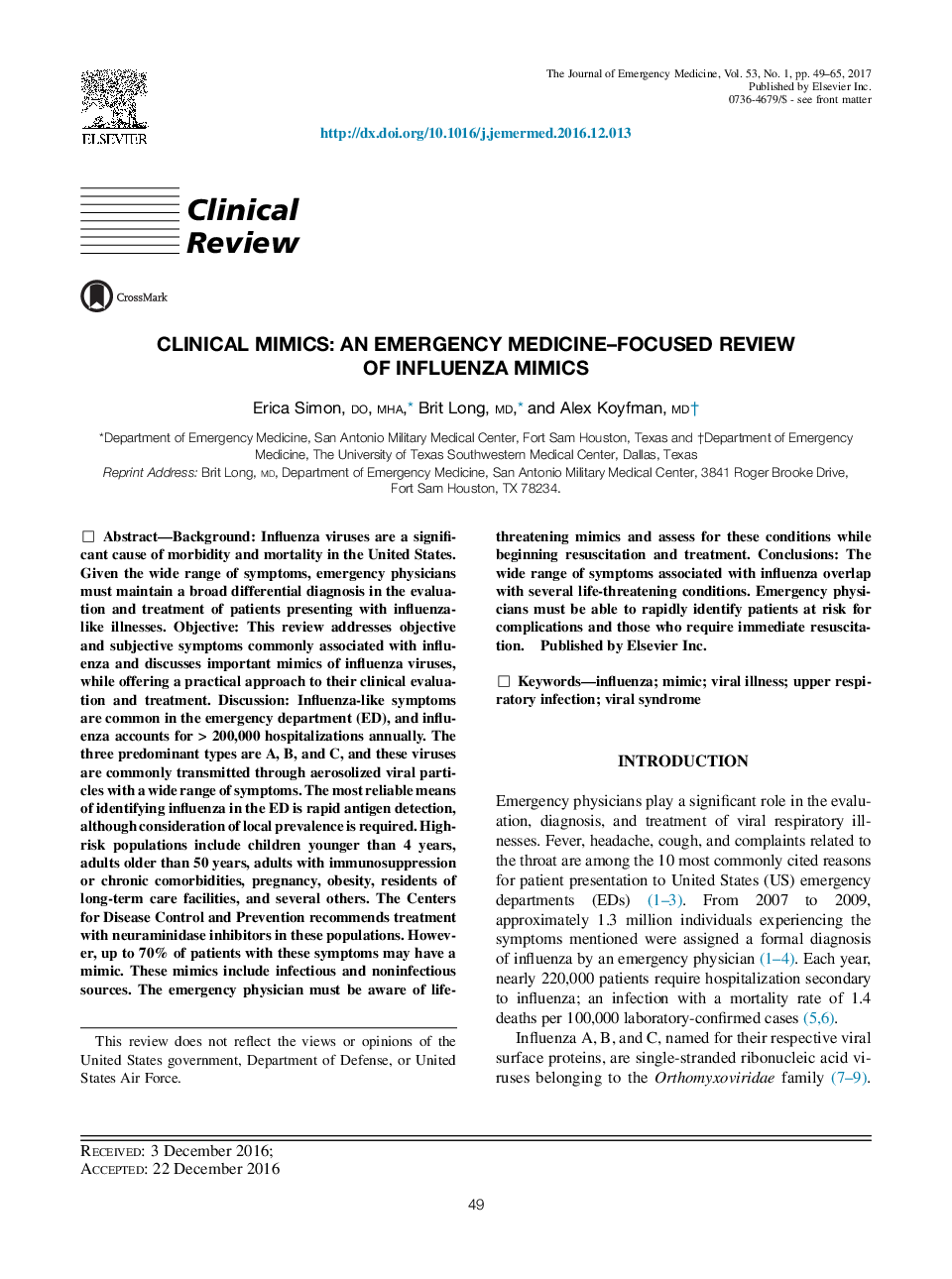| Article ID | Journal | Published Year | Pages | File Type |
|---|---|---|---|---|
| 5653756 | The Journal of Emergency Medicine | 2017 | 17 Pages |
BackgroundInfluenza viruses are a significant cause of morbidity and mortality in the United States. Given the wide range of symptoms, emergency physicians must maintain a broad differential diagnosis in the evaluation and treatment of patients presenting with influenza-like illnesses.ObjectiveThis review addresses objective and subjective symptoms commonly associated with influenza and discusses important mimics of influenza viruses, while offering a practical approach to their clinical evaluation and treatment.DiscussionInfluenza-like symptoms are common in the emergency department (ED), and influenza accounts for > 200,000 hospitalizations annually. The three predominant types are A, B, and C, and these viruses are commonly transmitted through aerosolized viral particles with a wide range of symptoms. The most reliable means of identifying influenza in the ED is rapid antigen detection, although consideration of local prevalence is required. High-risk populations include children younger than 4 years, adults older than 50 years, adults with immunosuppression or chronic comorbidities, pregnancy, obesity, residents of long-term care facilities, and several others. The Centers for Disease Control and Prevention recommends treatment with neuraminidase inhibitors in these populations. However, up to 70% of patients with these symptoms may have a mimic. These mimics include infectious and noninfectious sources. The emergency physician must be aware of life-threatening mimics and assess for these conditions while beginning resuscitation and treatment.ConclusionsThe wide range of symptoms associated with influenza overlap with several life-threatening conditions. Emergency physicians must be able to rapidly identify patients at risk for complications and those who require immediate resuscitation.
